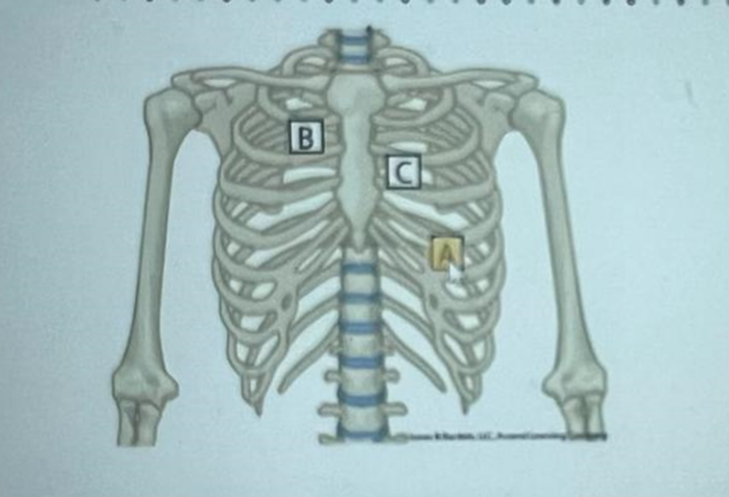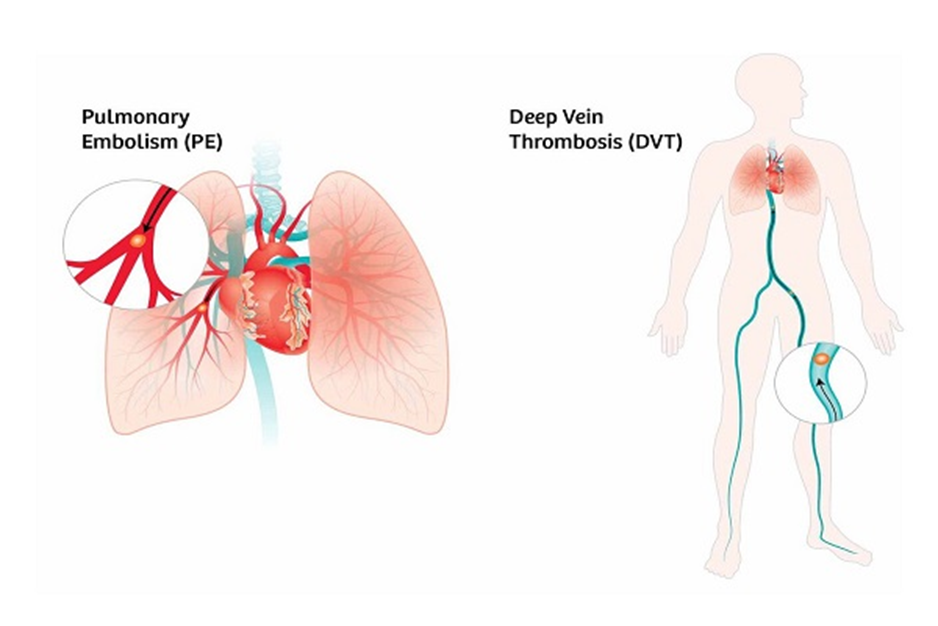A nurse is collecting data from a client during a routine physical exam. Which of the following locations should the nurse identify as the point of maximum impulse?

A
B
C
The Correct Answer is A
Choice A: The fifth intercostal space at the midclavicular line
The point of maximal impulse (PMI), also known as the apical impulse, is usually located in the fifth intercostal space at the midclavicular line. This is the point on the precordium farthest outwards (laterally) and downwards (inferiorly) from the sternum at which the cardiac impulse can be felt.
Choice B: The first intercostal space at the sternal border
The first intercostal space at the sternal border is not typically the location of the PMI. The PMI is usually located in the fifth intercostal space at the midclavicular line.
Choice C: The second intercostal space at the sternal border
The second intercostal space at the sternal border is not typically the location of the PMI. The PMI is usually located in the fifth intercostal space at the midclavicular line.
Nursing Test Bank
Naxlex Comprehensive Predictor Exams
Related Questions
Correct Answer is D
Explanation
Choice A reason:Aspiration pneumonia is typically caused by inhalation of foreign material into the lungs rather than by contagious pathogens. Therefore, standard precautions are usually sufficient unless a secondary infection with a transmissible organism is present.
Choice B reason: Applying petroleum jelly to the client's nares may provide comfort but is not a priority in the care plan.
Choice C reason: Maintaining the client in a supine position is contraindicated as it can increase the risk of aspiration.
Choice D reason: Clients with hypoxia may experience symptoms such as confusion, restlessness, and dizziness, which can increase the risk of falls. Implementing fall precautions is a proactive measure to ensure patient safety in this context.
Correct Answer is C
Explanation
Choice A reason: While the client with a spinal cord injury does need care, it is not as immediately life-threatening as the symptoms described in choice C.
Choice B reason: A platelet count of 150,000/mm is within the normal range (150,000 to 450,000/mm), so this client's situation is not urgent.
Choice C reason: The client reporting pain in the left calf with an elevated respiratory rate could be experiencing a deep vein thrombosis (DVT) leading to a pulmonary embolism, which is a medical emergency.
Choice D reason: Obtaining a signed consent form is important but not as time sensitive as assessing and treating a potential DVT.

Whether you are a student looking to ace your exams or a practicing nurse seeking to enhance your expertise , our nursing education contents will empower you with the confidence and competence to make a difference in the lives of patients and become a respected leader in the healthcare field.
Visit Naxlex, invest in your future and unlock endless possibilities with our unparalleled nursing education contents today
Report Wrong Answer on the Current Question
Do you disagree with the answer? If yes, what is your expected answer? Explain.
Kindly be descriptive with the issue you are facing.
